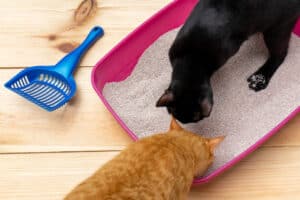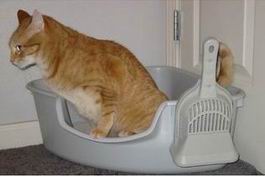
If you've ever wondered what makes your cat empty in a litter box, you are not alone
Many cat owners are surprised to find that their cat is responsible for at least 50% of household waste. In fact, they can be twice as responsible! In fact, it is not uncommon to find that most of the faeces in the litter box are not urine, but food.
The digestive system is one of the largest organs in the body and contains two layers of tissue, including the intestines, gallbladder, and kidneys, connected by a flexible tube called the small intestine. Digestion is the final process of the digestive process, in which enzymes break down proteins and carbohydrates into simple sugars or simpler compounds such as starches and carbohydrates, and then are excreted in the urine.
The large intestine is located between the stomach and the small intestine, and its job is to absorb nutrients and remove waste. The kidneys, which are responsible for filtering out excess fluid, are located at the back of the colon. When there is an imbalance between acid and alkaline levels in the urine, or an excessive amount of waste, it will cause problems with the excretion process.
A cat usually defecates after eating, but may defecate before eating. It is not uncommon for cats to defecate after eating, but usually only a few times a day. However, toilet training can go a long way, so you might want to think about it when trying to understand why your cat is helping out on the street. You will want to start toilet training when they are very young and continue until they are nine months old. It only takes your cat a few days to get used to using the litter box and you will be rewarded with a clean and fresh litter box.

Toilet training starts with a simple elimination lesson: Never pinch the cat's anal area during a bowel movement. As they get older, you can try playing with them a little to stimulate the exclusion reflex and help cats recognize the toilet as the right place for their business. However, it is important to make sure that this happens no more than once or twice a day, and never when your cat is alone. – you don't want your cat to feel guilty.
When it comes to toilet training your cat, don't worry about getting your cat to stop doing it outdoors – it's easy. As your cat gets more comfortable with its use, you can introduce a few things – toys, a litter box, water bottle, and treats – to increase the comfort level. After several days, you can gradually increase the amount of time they need to use the toilet.
Another great trick for eliminating your cat's waste outside is to train it to flush its bowels. Most cats enjoy the feeling of sitting in a specially designed litter box on their own and will happily sit there until it's time to go, so this could be a good way to solve the problem.
Although it may sound silly, some people even go to great lengths to train their cats to "hold" their cat's litter box. In fact, many animal shelters offer professional training services, so if you are interested in getting your kitty to hold its toilet for you, there's no reason why you shouldn't get a few lessons in pet training.